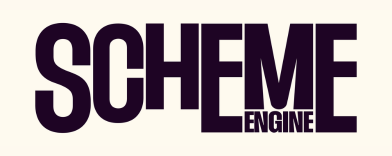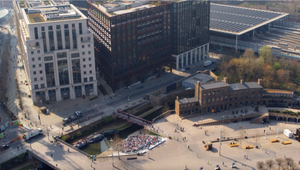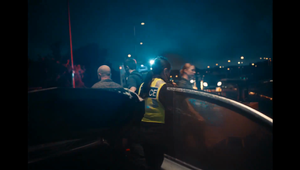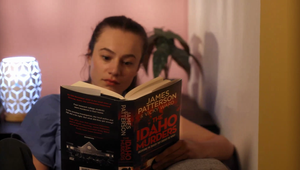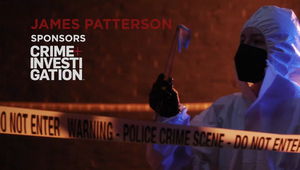
Havas UK On Putting Commuters in the Shoes of Refugees

In a poignant new campaign, ‘The Unsafest Journey’, UK charity Refugease and Havas UK challenged commuters to reflect on their journeys and compare them to those of refugees risking everything to cross the English Channel. Launched on August 22nd – a date marked with the highest number of attempted crossings on record – this campaign uses immersive experiences to drive its message home.
At the heart of the initiative are striking visual and auditory activations. Commuters at Tottenham Court Road station and Central London’s Elizabeth line stations will encounter disorienting digital ads that simulate the terrifying experience of being on a small boat in choppy waters. It poses the haunting question, ‘What if this was the only way to reach your destination?’, aiming to provoke empathy and urgency.
Complementing these digital displays are print activations featuring heart-wrenching imagery, such as a child's shoe sinking beneath the waves – a stark reminder of the lives lost during these perilous journeys. A mural on Ramsgate’s sea wall, crafted from orange life jackets – only revealed as the tide recedes – symbolises the tragic toll of migration.
Conceived by Havas London, the campaign seeks to raise awareness and inspire donations to Refugease, which specialises in frontline evacuations, humanitarian aid, and self-reliance initiatives for refugees. By inviting travellers to donate the cost of their own journeys, Refugease aims to transform awareness into action, illuminating the plight of those who must navigate life-threatening waters in search of safety.
Oscar Frost and Muskaan Razdan, the creative team behind the campaign, and creative director Kate Pozzi, tell us more.
LBB> How did you come about the research insight that stood at the centre of this campaign and how did that lead the creative?
Oscar & Muskaan> We were driven by the central thought – no one gets on a boat if it’s not their only option. When we first started thinking about ‘The Unsafest Journey’, there were a lot of news articles about refugees, and videos and interviews all over social media. We started talking about how the constant stream of messaging leads to desensitisation - reducing people to statistics. We wanted to create something that would cut through, that would make people feel.
LBB> It was important to catch commuters in their stride with the campaign, to make them feel like they're in the shoes of refugees attempting to cross the channel. Was it difficult to take over the Elizabeth line and Tottenham Court Road, who did you work with and what strategic thinking came when picking these key locations?
Kate> Every partner has helped us make this a reality. We worked closely with the team at Global Media, who has been so supportive of this idea from the very beginning. Over 300,000 commuters pass through these stations every day – that’s a lot of journeys we can disrupt. The digital 48 sheet at Tottenham Court Road is a really powerful space. As you descend into the tube, the dark sea engulfing you, you really feel the impact of the water and can put yourself literally in their boat. We wanted to continue that feeling of immersion through the station. From having the sea above you, to running the length of 50 escalator panels and seeing the D6 posters as you continue to the platform.
LBB> The campaign has so many assets - the audio spots, the mural, the print and video assets. Why was it important to hit all these levels of communication and which one was the hardest to execute?
Kate> Not everyone will commute through these central London stations. So, we wanted to find other ways to interrupt journeys and bring a refugee’s journey to millions. The hardest to execute were probably the audio spots. They’re based on real distress calls made by refugees to the coast guard, and are voiced by people who themselves are refugees. We had to source the transcripts, recreate them, and make them immersive. We worked with Dave Robinson at Creative Outpost, who designed them in 3D binaural sound. The spots put you in the centre of danger – on a boat as it capsizes. It’s harrowing to hear their words with Dave’s incredible sound design.
LBB> Tell me about the mural on Kent Coast. Who created it and how long did it take?
Oscar & Muskaan> ‘The Orange Iceberg’ is a mural made by street artist Humor (Hugh Whitaker). The mural, a mountain of life jackets, is revealed by the waves, representing the hundreds of refugees who lose their lives to sea every year. We took the idea from concept to execution in just five days.

LBB> Was there some level of worry when creating this campaign amidst the country-wide riots? Or did you feel like now was the perfect time to send this message?
Kate> With the negative sentiment around the refugee crisis right now, the work Refugease does is even more crucial. It is literally out there supporting refugees in transit around the world, so no-one has to put their children in a boat, in the dark, in a fake life-jacket filled with straw, into the world’s busiest shipping lane. Even this week, 12 people died trying to cross the Channel, including six children and a pregnant woman. Every donation to Refugease can help prevent them having to make this journey. And getting people to think differently is the first step.
Donate the cost of your daily journey to prevent their deadly one here.






